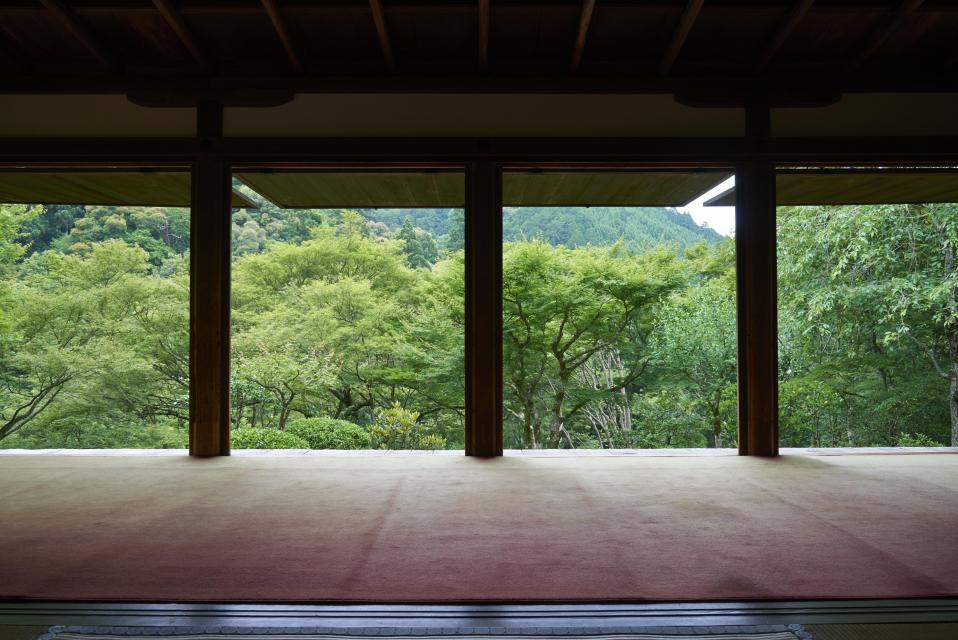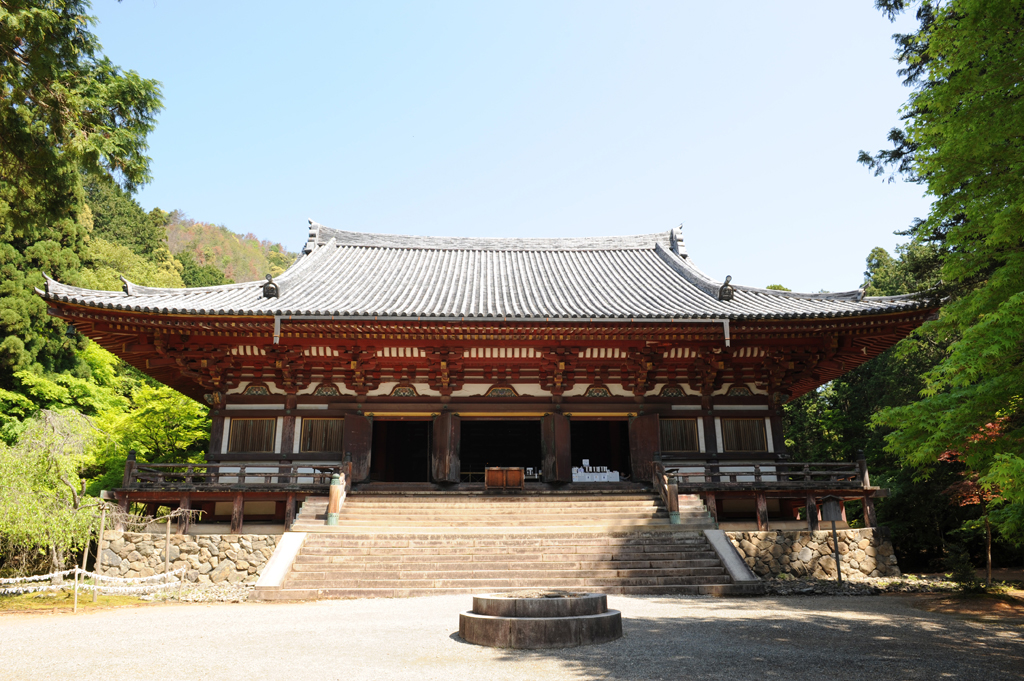
Kosan-ji Temple stands in a mountain forest. Towering cedar trees line the path to the temple and admit shafts of sunlight to the moss-covered ground. A quiet and secluded place, Kosan-ji’s charm lies in its atmosphere. You can sit on the temple’s veranda overlooking the Kiyotaki-gawa river valley, admire the scenery of green hills, listen to the forest sounds, and easily imagine yourself back in the 13th century and the time of the temple’s founding.
The temple was founded by a priest named “Myoe”, who restored a previous mountain temple with help from the retired Emperor Gotoba. The emperor’s hall and Myoe’s former residence still stand. The residence is one of few remaining examples of Kamakura Period architecture, with its roof of thatch and shingles.
The grounds also hold the oldest tea field in Japan, which was planted by Myoe with seeds he received from the priest Eisai, who had brought them back from China. Tea was used to help monks stay awake during late-night meditation.
The temple’s treasures also include the “Choju Jinbutsu Giga” (“The Scrolls of Frolicking Animals and Humans”), famous picture scrolls featuring frogs, monkeys, birds, and rabbits engaged in worldly pursuits. Sometimes described as Japan’s first comic, this brush painted scroll satirizes human foibles.
Basic Information
- Address : 8 Umegahata-Toganoo-cho, Ukyo-ku, Kyoto City
- Website : Click here (Japanese)
- Access : Comfortable access to Takao





